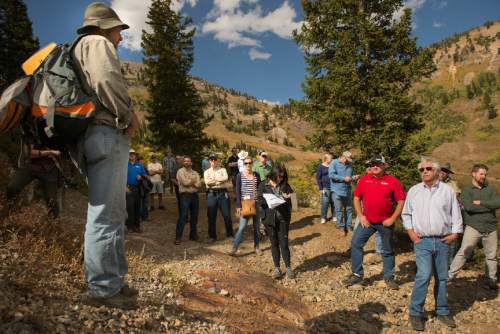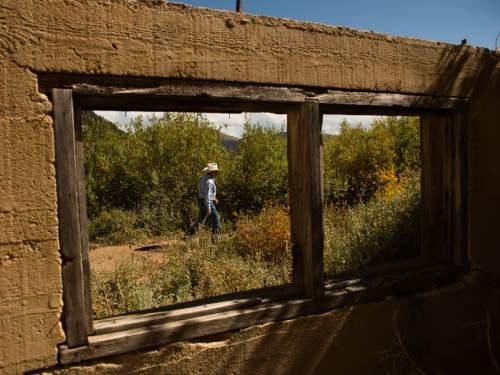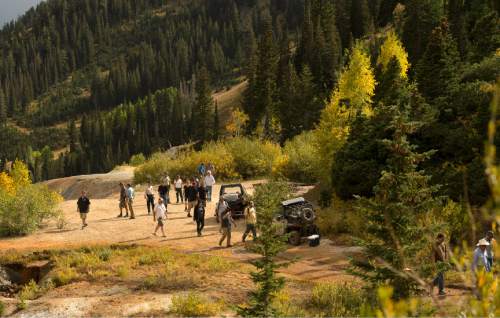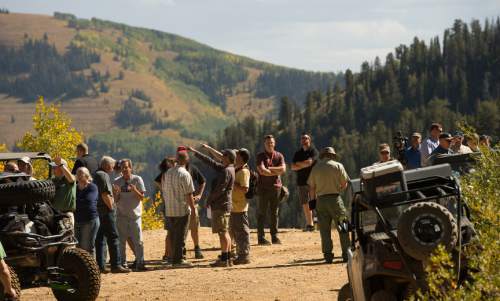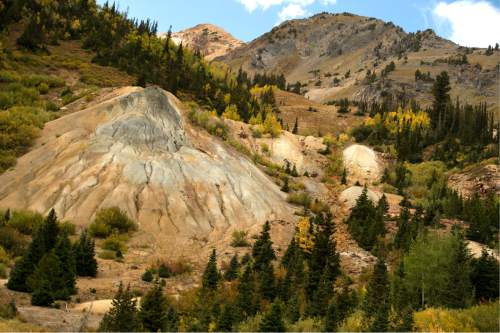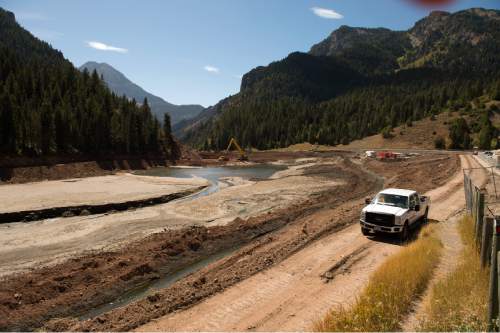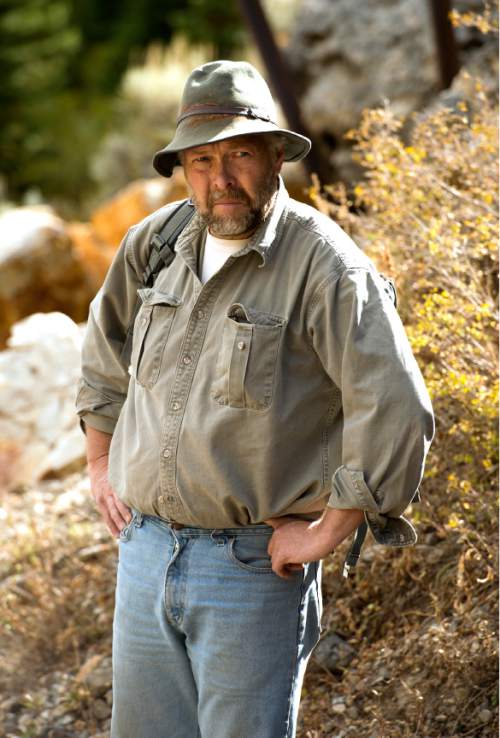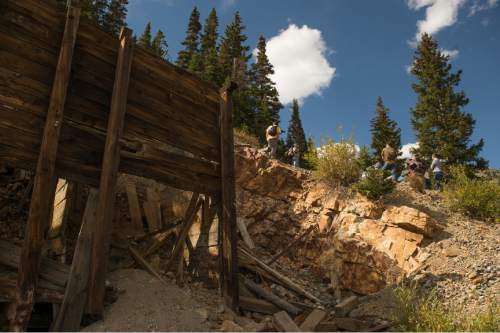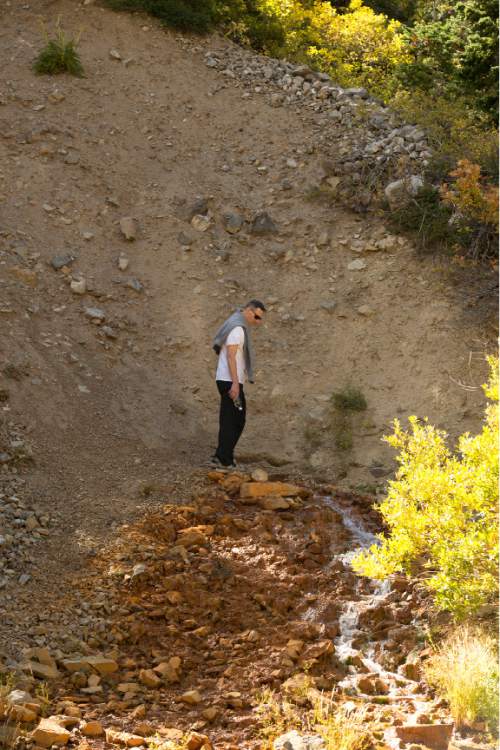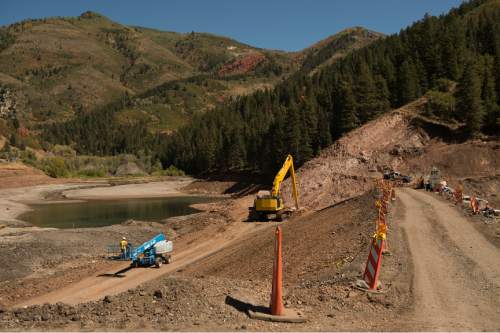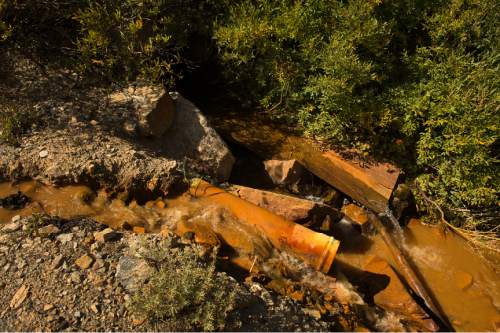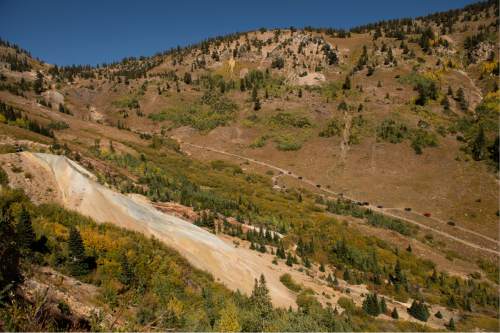This is an archived article that was published on sltrib.com in 2016, and information in the article may be outdated. It is provided only for personal research purposes and may not be reprinted.
Hundreds of miners toiled in Mary Ellen Gulch a century ago, turning mountaintops inside out at the headwaters of American Fork Canyon in search of ore bearing precious metals.
Many tons of rock had to be dug and milled to yield a single ounce of gold or silver. Compounds bearing other metals were left behind in big piles that spill below dozens of mine openings here. At the former entrance to Live Yankee Mine, buried to keep out the curious, a stream is discharging 50 or so gallons a minute into a gully that leads into the North Fork of the American Fork River.
The Live Yankee is just one of hundreds of abandoned historic mines in the Wasatch Mountains that threaten water quality. Depending on the chemistry of their ore, old hard rock mines could discharge acidic water rich in toxic metals, such as lead, arsenic and zinc.
But the mining companies are long gone, and it's unclear who should be held responsible for mitigating the damage caused by the mine openings and tailing piles, according to Lauren Pagel, policy director for Earthworks.
"There is still no comprehensive inventory of abandoned hard rock mines, no system to prioritize the most dangerous of these mines for cleanup, and almost no funds to clean up these sites," Pagel testified before Congress last year following the Gold King mine spill in Colorado.
For the past 60 years, heavy metals from mines in Mary Ellen Gulch and Mineral Basin have settled in the sediments behind Tibble Fork Dam, several miles downstream, without doing much harm to the environment. That changed on Aug. 20, when the North Utah County Water Conservancy District drew down the reservoir — releasing up to 8,700 cubic yards of sediments into the American Fork River, wiping out all fish for a two-mile stretch and contaminating the river bed.
The incident is a reminder of the potential harm associated with the West's legacy of mineral extraction, which helped build a nation but left future generations with a huge environmental liability. According to the Government Accountability Office,160,000 abandoned mines remain in Western states, about one-fifth of which are discharging acidic water.
Some 40 percent of the mountain headwaters in Utah and neighboring states have been contaminated by historic mines, affecting 12,000 stream miles and thousands of lakes.
—
Mark Allen, founder of the group Protect and Preserve American Fork Canyon, last week organized a tour of Live Yankee, attended by about 70 elected officials, state regulators, public lands managers and others concerned about the future of this area.
Named for boarding house cook Mary Ellen Oakley, the gulch is now popular for outdoor recreation. But it is largely owned by Snowbird Ski and Summer Resort, which acquired hundreds of acres of dormant mining claims at the top of American Fork Canyon, just over the ridge from its base in Little Cottonwood Canyon.
The world-famous ski resort intends to expand into Mary Ellen, triggering an outcry from Utah County motorized enthusiasts who fear the loss of access to a favorite destination. Allen is worried about the expansion's potential to disturb mine sites and send more toxic sediments down canyon.
"You need a task force to protect this drainage and other drainages. Water is paramount. We hear that we have to expand our recreation base because our population is going to grow. I say we need to protect our water," said Allen.
As part of an agreement with county officials in exchange for permission to build two lifts here, Snowbird has been monitoring the water below Live Yankee since April.
"The results are positive and going well and we hope to begin construction on lifts in two to three years. It is our intent to work with the community to make this work for as many folks as we can. As hard as we try we probably won't make everybody happy," Bob Bonar, Snowbird's president and CEO, told reporters.
He denied rumors that Snowbird wants to build condos with a road connection down to Tibble Fork Reservoir.
"Our plan is to have better hiking trails, better biking trails, continued summer motorized use as per county road access, and to enhance the already great skiing at Snowbird with two more lifts similar to the lifts we added to Mineral Basin," Bonar said.
The state's water quality boss, Walt Baker, said the Department of Environmental Quality expects to process a wastewater discharge permit in connection with the Live Yankee Mine, which will enable monitoring at the mine and downstream.
"We have a potential point source for pollution. We are not going to rush to judgment and say we've got a problem," he said. Metals held in sediments weren't a problem, he said, but "we see evidence in the macro-invertebrate community [that] downstream all is not right. If we are violating our water quality standards we will do a concentrated study to identify the problem and determine the mechanism for cleanup."
—
Allen is convinced Snowbird should be more engaged with cleaning up Live Yankee and other mines on its Mary Ellen property. "They are proposing a use change. They are proposing to bring tens of thousands of people to this area," he said.
However, contemporary owners who did not create the pollution, such as Snowbird, are under no legal obligation to clean old mine sites, according to Warren Colyer, a Trout Unlimited (TU) program manager who oversees mine reclamation projects.
He said it's not fair to expect such owners to assume the financial risk and liability of undoing environmental damage from long-ago mining operations.
Owners can get saddled with cleaning obligations if they disturb mine sites, so they have an incentive for leaving old mines alone, especially when there is no funding for cleanups.
Colyer praised Snowbird's efforts to tidy up the old Pacific Mine in Mineral Basin 10 years ago. Under TU's direction, several agencies designed and funded a reclamation project that relocated Pacific's dangerous tailings away from a stream and stabilized them.
TU is pushing for "Good Samaritan" reforms that allow third parties to clean up old mines without incurring risk, should things not go well. But legislation has languished in Congress for a decade.
Earthworks supports such reforms as long as they are not exploited by mining companies to rework old mines with new extractive technologies. Under the 1872 Mining Law, miners acquired public land for next to nothing and hauled away millions in mineral wealth without paying a nickel in royalties, Pagel said.
She argues it's time to impose a fee on each ton of waste rock generated by hard rock mines. The revenue would build a reclamation fund similar to one in place for coal mines since 1978. Right now, there is no funding for the abandoned mine problem, which Earthworks estimates would cost $70 billion to neutralize.
Brian Maffly covers public lands for The Salt Lake Tribune. Maffly can be reached at bmaffly@sltrib.com or 801-257-8713.
Twitter: @brianmaffly


